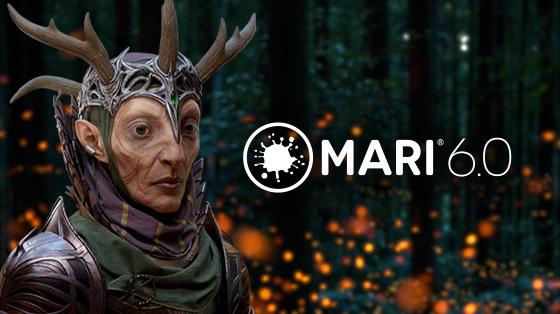News
Mari 6.0 delivers enhanced USD exports and new Roller Brush paint mode to enable greater artist efficiency
With two major USD improvements and an upgrade to Python processes, Mari 6.0 ensures that artist pipelines are USD ready.

Foundry, the leading software developer for Media and Entertainment, today releases Mari 6.0. This release focuses on enhancements to improve artists’ workflows and efficiency, with two new USD Exports, a new Roller Brush paint mode, Python snippets as Shelf items and a teleport node.
The two new USD improvements are designed to ensure that texturing pipelines are USD-ready. With the USD Look Exporter, artists can export a single USD Look file that contains all of the relevant shader information, reducing duplication of work in setting up USD Looks for use in Katana or other DCCs and bringing Look Development and Lighting together earlier on in the pipeline. Artists will also now have the ability to use Mari’s selection tools to assign materials to the correct USD face set-based location.
Building on the already extensive painting toolset in Mari, the Roller Brush is a new painting mode that enables artists to paint a tileable image whilst following the curves and directions of a brush stroke. This allows artists to perfect the finer details without having to manually paint each individual stitch by hand, saving valuable time without losing creative control. This makes repetitive painting tasks such as creating seams and decals on characters’ clothing easier than ever.
Mari 6.0 also introduces a simpler way to execute Python Script actions using Python Snippets as Shelf items, so artists aren’t required to install Python Scripts into the Scripts path before launching Mari. This encourages collaboration between artists as they can more easily share scripts amongst themselves and across studios, meaning tasks can be completed more efficiently.
Finally, the teleport node: a node of two parts—Broadcaster and Receiver—that creates hidden connections in the nodegraph lands in this release. Allowing artists to easily organize the nodegraph, clean up networks and reduce excess clicks, the teleport workflow saves valuable time and reduces the risk of strain from manual navigation. Artists can jump quickly between Broadcast and Receiver to quickly navigate the nodegraph without needing to manually find nodes.
“Since Mari 5.0, we’ve been trying to make USD and its workflows more accessible to smaller studios who don’t have large software or pipeline teams. I’m really pleased that this next major release of Mari includes more out-of-the-box USD updates to continue this support. The new USD Look Export system makes working with USD more manageable for studios who may not have set up their own integrations for USD import/export in their own pipelines yet.” Charli Holt, Product Manager for Mari, comments.
“Mari 6.0 further reduces duplication for artists working between Mari and Katana and removes the need to manually reassign face set data inside of your Lookdev DCC. Artists can now use Mari’s selection group tools to quickly assign materials to specific areas of their model and these materials will remain correctly assigned within the exported USD Look. Alongside the Roller Brush, teleport Node and Python Script feature updates, this version of Mari is focused on boosting collaboration and efficiency for artists and studios—I can’t wait to see what they will achieve!”
To learn more about Mari 6.0, visit the Mari release page here.